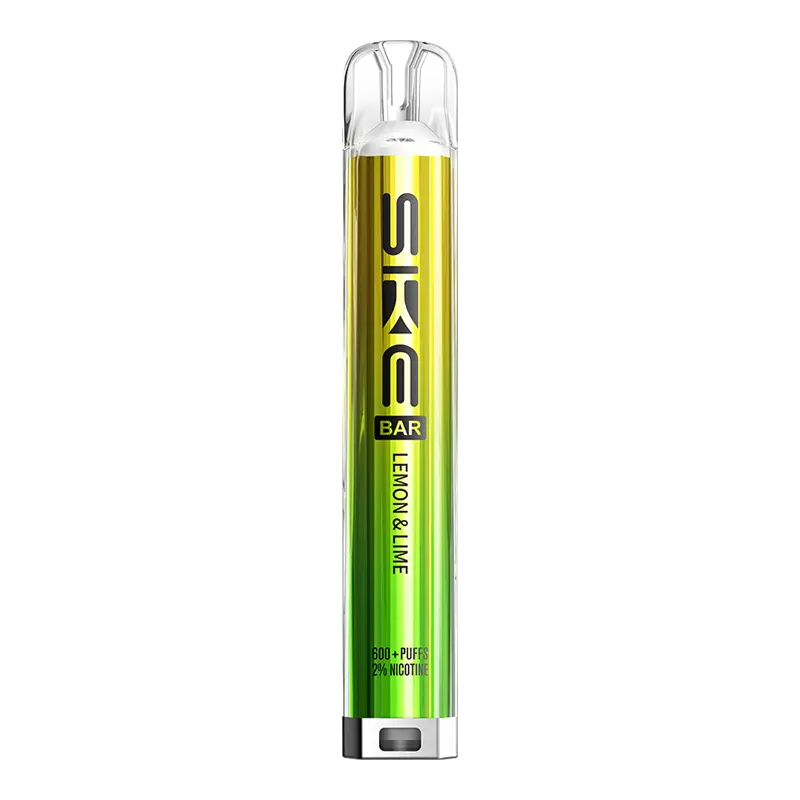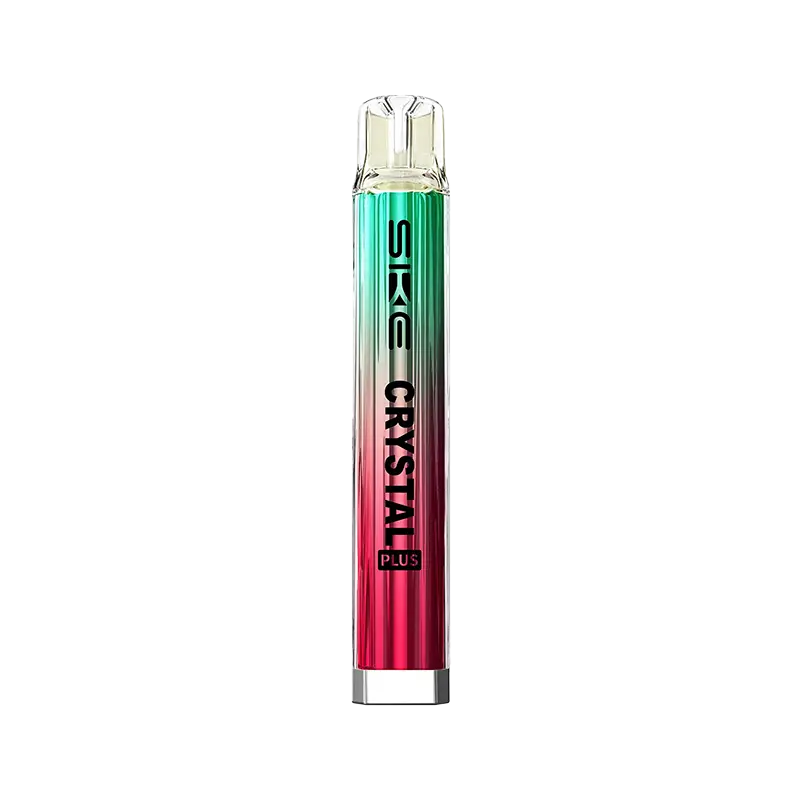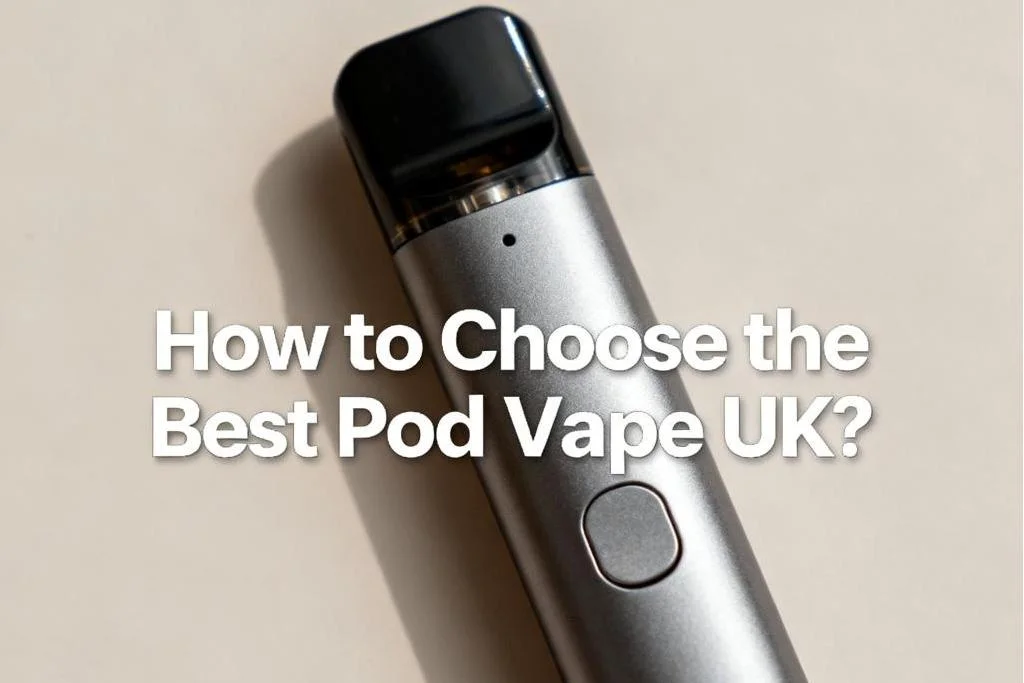How Much Sugar is in a 60ml Bottle of Vaping Juice?
A common question among vaping enthusiasts is, "How much sugar is in a 60ml bottle of vaping juice?" Considering the wide array of sweet flavors on the market, it's easy to assume that vape juice might contain sugar. However, this assumption doesn't hold up. In this blog post, we'll explore the connection between vape juice and sugar.

What the Heck is Vape Juice Anyway?
To break it down, here's a detailed overview of what vape juice is made of:
Propylene Glycol (PG):
- A colorless and odorless liquid commonly used in food, medicine, and cosmetics. It has a low viscosity, meaning it's thinner, which allows it to carry flavors more effectively.
- PG is responsible for the "throat hit" that mimics the sensation of smoking, which many former smokers find satisfying.
Vegetable Glycerin (VG):
- A thick, slightly sweet liquid derived from vegetable oils, commonly used in food production.
- VG produces dense, voluminous vapor clouds, a major attraction for cloud chasers. It's also more hydrating than PG, making the vapor feel smoother and less harsh on the throat.
Flavorings:
- Food-grade flavoring agents give vape juice its distinctive taste, whether fruity, dessert-like, mentholated, or tobacco-flavored.
- The flavorings usually mingle natural and artificial ingredients, carefully crafted to mimic real tastes.
Sweeteners (Often Present):
- Common sweeteners like Sucralose or Ethyl Maltol are added to enhance the sweetness of the vape juice and the overall flavor profile, without contributing to sugar content or calories.
- Sucralose is a widely used artificial sweetener, hundreds of times sweeter than sugar, but it doesn't caramelize or burn during vaping, reducing the risk of coil gunking.
- Ethyl Maltol is another common sweetener that adds a cotton-candy-like sweetness and can smooth out harsh flavors.
Nicotine (Optional):
- Nicotine is included in many vape juices to satisfy cravings for those switching from smoking.
- The nicotine level can be adjusted from high concentrations for heavy smokers to zero for those who want the flavor without the buzz.
- In vape juice, nicotine is usually in freebase form or as nicotine salts, the latter providing a smoother throat hit even at higher concentrations.
These components work together to create the vaping experience you're familiar with: PG and VG form the base, flavorings, and sweeteners add taste and sweetness, and nicotine provides that familiar kick if desired. While the sweet taste in vape juice might make you think it contains sugar, that sweetness comes from the added sweeteners, not sugar.
Digging Into the Sugar Content of Vape Juice
Now that we've covered the basics of what's in vape juice, let's address the burning question: how much sugar is in a 60ml bottle of vaping juice? The short answer is none. Despite the sweet flavors that can mimic everything from ripe strawberries to freshly baked cookies, vape juice doesn't contain sugar.
Why No Sugar in Vape Juice?
You might wonder, with so many sugary-sounding flavors, why isn't there any actual sugar in vape juice? The answer lies in how sugar behaves when heated.
If sugar were present in vape juice, it would caramelize and burn when heated by the coil, leading to a bitter taste and the rapid buildup of residue on the coil, which would degrade the performance of your vape device, requiring frequent coil changes and maintenance, resulting in an unpleasant vaping experience.
So, e-liquid manufacturers use artificial or natural sweeteners like Sucralose or Ethyl Maltol to provide the sensation of sweetness without the complications sugar would introduce. Unlike sugar, these sweeteners can handle the heat without burning or leaving behind a sticky residue, making them ideal for use in vape juice.
In addition, it's also important to note that the VG, in particular, is naturally sweet. Even without additional sweeteners, VG can give e-liquids a mild sweetness, especially in higher VG blends, which are common in e-liquids designed for larger vapor production.

How Does the FDA Regulate Sugar in Vaping Products?
When it comes to the regulation of vaping products in the United States, the Food and Drug Administration (FDA) impacts profoundly in ensuring that these products meet safety and quality standards. But how does the regulation influence the presence of sugar in vape juice?
The Role of the FDA in Vaping Regulation
The FDA is responsible for overseeing the production, marketing, and distribution of tobacco products, including e-cigarettes and vape juices. Since the Deeming Rule of 2016, which extended the FDA's regulatory authority to all tobacco products, including e-liquids, the agency has set strict guidelines on what can and cannot be included in these products, including ingredients like nicotine, flavorings, and other additives.
Why Sugar is a No-Go in Vape Juice
Sugar is absent from vape juice primarily due to the FDA's emphasis on product safety and integrity. Sugar, when exposed to the high temperatures generated by vaping devices, would caramelize and burn, leading to coil damage, poor vaping experience, and potential health risks from inhaling burnt sugar.
The FDA's regulations prohibit ingredients that could compromise the safety or quality of the vaping product. As a result, manufacturers must exclude sugar from their e-liquid formulations to comply with these regulations.
Testing and Compliance
Vape juice manufacturers must submit their products for FDA approval, which involves a thorough review of the e-liquid's ingredients, including their formulations, and any sweeteners or flavorings used. The FDA assesses the safety of each ingredient, guaranteeing that none pose a risk when vaporized and inhaled.
The absence of sugar in vape juice is part of the broader regulatory landscape aimed at protecting consumers. By adhering to these regulations, manufacturers safeguard that their products are safe for use and free from harmful ingredients like sugar that could degrade the vaping experience or pose health risks.
Global Regulatory Perspective
It's also worth noting that similar regulations exist in other countries. The European Union, for instance, has its own set of standards for e-liquids under the Tobacco Products Directive (TPD), which also limits certain ingredients for product safety. While the specific regulatory bodies may differ, the rationale behind excluding sugar from vape juice is consistent: to ensure a safe, enjoyable, and reliable vaping experience.
If Vape Juices Have No Sugar, Why Do They Taste Sweet?
So, if there's no sugar in vape juice, what's the secret behind those sweet, irresistible flavors that keep you coming back for more?
The Magic of Flavorings
The sweetness in vape juice comes from food-grade flavorings and sweeteners specifically designed to mimic the taste of sugary treats without actually containing sugar. These flavorings can replicate the taste of everything from ripe strawberries to rich custards or even candy, giving you the sensation of sweetness without the health concerns associated with sugar.
They're the same type used in the food and beverage industry, planned to be safe for consumption and stable under the conditions found in vaping. They are highly concentrated, which means only a small amount is needed to produce a strong, sweet flavor in your vape juice.
The Role of Sweeteners
As mentioned earlier, many vape juices include sweeteners like Sucralose or Ethyl Maltol to enhance the sweetness of the flavors. Sucralose, for example, is an artificial sweetener, about 600 times sweeter than sugar, so even a tiny amount can markedly influence the taste. On the other hand, Ethyl Maltol adds a more subtle, cotton-candy-like sweetness that can smooth out harsh flavors and round off the overall taste profile.
They are specifically chosen because they don't caramelize or burn at the temperatures used in vaping, which means vapers can enjoy sweet flavors without worrying about damaging their coils or inhaling burnt sugar.
The Natural Sweetness of VG
VG is naturally sweet, even without added flavorings or sweeteners. In high VG e-liquids, this natural sweetness can be quite pronounced, adding to the overall sweet sensation without needing extra sweeteners.
Perception of Sweetness
When VG's natural sweetness combines with flavorings and sweeteners, it can create a layered, complex sweetness that feels satisfying and indulgent, similar to eating a sweet treat. The absence of sugar doesn't detract from the experience because these alternatives do such a good job of mimicking the flavor profile we associate with sugary foods.

Do Flavored Vape Juices Contain More Sugar?
With the wide array of flavored vape juices available, from fruity concoctions to decadent desserts, it's natural to wonder if these delicious flavors come with an added dose of sugar. However, the short answer remains the same: flavored vape juices don't contain sugar.
Flavor Creation Without Sugar
The sweet, rich, or tangy flavors you enjoy in vape juices are created using food-grade flavorings carefully formulated to replicate the taste of fruits, candies, and desserts without adding any real sugar.
Sweeteners in Flavored E-Liquids
The sweeteners make certain flavors pop, especially in e-liquids meant to taste like desserts or candies, aiming to create a perception of sweetness similar to what you'd get from sugar, without the actual sugar content.
What's the Deal With Nicotine Salts?
The essential point to understand is that nicotine salts don't contain sugar. Nicotine salts are simply a different form of nicotine, created by combining pure nicotine with an acid to make it smoother on the throat, which is entirely unrelated to the sugars or sweeteners.
Do Nicotine Salt E-Liquids Contain Sugar?
Just like regular e-liquids, nicotine salt e-liquids don't contain sugar. The presence of nicotine salts in an e-liquid doesn't change its sugar content — vape juices, whether they use freebase nicotine or nicotine salts, remain sugar-free.
Nicotine Salts on Sweetness Perception
While nicotine salts don't add sugar to vape juice, they can enhance the perception of sweetness by making the vaping experience smoother and allowing the sweet notes from flavorings to stand out more clearly. However, this is purely a sensory experience and has nothing to do with the presence of sugar.
To wrap up, nicotine salts don't introduce sugar into vape juice. Whether you're vaping with nicotine salts or freebase nicotine, the absence of sugar remains constant.

Do Disposables and Pre-Filled Pods Have More Sugar?
For disposables and pre-filled pods, the question of sugar content often arises. The answer is straightforward: no, disposables and pre-filled pods do not contain sugar.
Sugar Content in Disposables and Pre-Filled Pods
Just like bottled vape juices, disposables, and pre-filled pods are formulated without sugar. The manufacturing process for these products is designed to maintain the same sugar-free standards as any other vape juice.
Why They Might Taste Sweeter
The sweetness comes from the flavor profile and the sweetener concentrations used, not from any added sugar. Manufacturers often enhance the sweetness to create a more appealing flavor, especially in products catering to mass-market appeal.
Consistency of Sugar-Free Formulations
Whether you're using a disposable vape, a pre-filled pod, or a traditional vape juice, the formulation remains consistent: these products don't contain sugar. Applying sugar in any vape product would generate issues such as caramelization and coil gunking, which is why manufacturers avoid it entirely.
What About Sugar In Dry Herb and Wax Vaping?
In dry herb and wax vaping, sugar content isn't a concern because no sugar is involved. Unlike e-liquids specifically formulated with various ingredients, dry herb and wax vaping rely entirely on the direct vaporization of natural plant material or concentrated extracts. Any sweetness or flavor stems from the plant's terpenes and other compounds, which makes dry herb and wax vaping a completely sugar-free option, focused on delivering the pure essence of the plant.
FAQs About Vape Juice and Sugar
Q: Are zero-sugar vape juices healthier?
Zero-sugar vape juices are standard across the industry, meaning all vape juices are sugar-free. While they avoid the issues associated with sugar, such as caramelization and coil damage, the overall health impact of vaping depends on other factors like nicotine content and individual health conditions, not just the absence of sugar.
Q: How can I be sure my vape juice has no sugar?
You can be confident that your vape juice has no sugar because sugar is not used in any vape juices. Manufacturers rely on sweeteners like Sucralose or Ethyl Maltol to provide sweetness, and sugar is avoided to prevent issues like coil gunking and burnt tastes.
Q: Do all nic salt juices have extra sugar?
No, nicotine salt juices don't contain extra sugar. Like all vape juices, they are sugar-free and rely on sweeteners to achieve their flavor.
Q: Should diabetics vape zero-sugar juice?
Since all vape juices are sugar-free, diabetics don't need to worry about sugar intake from vaping. However, they should consider other factors, such as nicotine’s effects on blood glucose levels, and consult with a healthcare provider before using vape products.
Q: What health risks are linked to sweetened vape juices?
Sweetened vape juices use non-sugar sweeteners like Sucralose, which don't pose the same health risks as sugar. Nevertheless, these sweeteners can contribute to coil gunking and a burnt taste if overused. Besides, the broader health risks of vaping are related to nicotine and other ingredients, not specifically to the use of sweeteners.
In conclusion, vape juice is completely sugar-free, regardless of the sweet flavors you might enjoy. The sweetness in e-liquids is achieved through non-sugar sweeteners that are specifically chosen to enhance flavor without the negative effects that sugar would introduce. Whether you’re vaping a fruity blend, a rich dessert flavor, or a simple tobacco juice, you can be confident that your vape juice contains no sugar, ensuring a consistent, enjoyable, and device-friendly experience every time.
TABLE OF CONTENTS
- What the Heck is Vape Juice Anyway?
- Propylene Glycol (PG):
- Vegetable Glycerin (VG):
- Flavorings:
- Sweeteners (Often Present):
- Nicotine (Optional):
- Digging Into the Sugar Content of Vape Juice
- Why No Sugar in Vape Juice?
- How Does the FDA Regulate Sugar in Vaping Products?
- The Role of the FDA in Vaping Regulation
- Why Sugar is a No-Go in Vape Juice
- Testing and Compliance
- Global Regulatory Perspective
- If Vape Juices Have No Sugar, Why Do They Taste Sweet?
- The Magic of Flavorings
- The Role of Sweeteners
- The Natural Sweetness of VG
- Perception of Sweetness
- Do Flavored Vape Juices Contain More Sugar?
- Flavor Creation Without Sugar
- Sweeteners in Flavored E-Liquids
- What's the Deal With Nicotine Salts?
- Do Nicotine Salt E-Liquids Contain Sugar?
- Nicotine Salts on Sweetness Perception
- Do Disposables and Pre-Filled Pods Have More Sugar?
- Sugar Content in Disposables and Pre-Filled Pods
- Why They Might Taste Sweeter
- Consistency of Sugar-Free Formulations
- What About Sugar In Dry Herb and Wax Vaping?
- FAQs About Vape Juice and Sugar
- Q: Are zero-sugar vape juices healthier?
- Q: How can I be sure my vape juice has no sugar?
- Q: Do all nic salt juices have extra sugar?
- Q: Should diabetics vape zero-sugar juice?
- Q: What health risks are linked to sweetened vape juices?






















